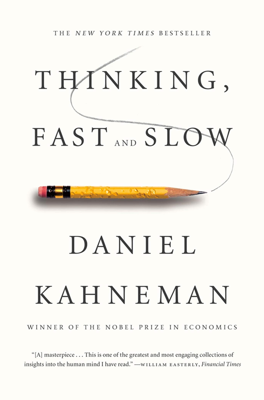Availability, Emotion, and Risk
Availability, Emotion, and Risk in Decision Making
Link Between Availability Bias and Risk Perceptions: Availability effects influence behaviors such as the purchase of insurance and the adoption of safety measures after disasters. As the emotional impact and memory of a disaster fade, so does the urgency of taking preventive actions.
Historical Observations: Both individuals and governments tend to prepare for disasters only as severe as the worst previously experienced, lacking the imagination to anticipate worse scenarios. This tendency limits the effectiveness of measures designed to mitigate future risks.
Influence of Media and the Notion of Frequency
Availability Bias Demonstrated Through Surveys: Surveys show that the public’s perception of the frequencies of causes of death is heavily distorted by media coverage, which favors novelty and emotional impact. For example, strokes are statistically more frequent causes of death than accidents, but most people believe the opposite because accidents get more media coverage.
Emotional Responses Linked to Risk Perception: The ease with which risks are imagined and the emotional responses they evoke are interconnected. Vivid, easily recalled dangers can amplify fear disproportionately to the statistical probability of these events occurring.
The Affect Heuristic
Decision Making Influenced by Emotion: Paul Slovic developed the concept of the "affect heuristic," where people rely on their immediate emotional responses to judge the benefits and risks of a situation. An emotional response to a technology or issue, whether favorable or not, can skew perceptions of its associated risks and benefits.
Empirical Studies on Technology Perceptions: Studies reveal that individuals who have a positive emotional response to a technology perceive it as less risky and more beneficial, even without new evidence to support these beliefs.
The Role of Experts vs. Public Perception
Differences in Risk Evaluation: Experts typically evaluate risks based on quantitative measures like the number of lives lost, while the public may consider qualitative factors, such as the nature of those deaths. This discrepancy can lead to conflicts between expert assessments and public sentiments.
Challenges in Regulation and Risk Policy: Experts argue for decisions based on rational cost-benefit analyses, while the public's fear and emotional responses often drive policy. This gap can lead to inefficiencies and misallocated resources in risk management and public policy.
The Concept of Availability Cascades
Availability Cascades Defined: An availability cascade is a cycle where a risk becomes exaggerated through media amplification and public reaction, escalating fear and concern, and often leading to disproportionate government action. This phenomenon shows how public emotion can override statistical reality in shaping policy.
Case Studies: Notable examples like the Love Canal incident and the Alar scare illustrate how availability cascades can lead to significant political and social consequences, often fueled by initial reports that magnify a risk beyond its actual statistical threat.
Conclusion and Psychological Implications
- Balancing Expertise and Public Sentiment: Effective risk management should merge expert knowledge with public intuition and emotion. While experts provide the analytical backbone for policy decisions, acknowledging and addressing public fears is crucial for democratic legitimacy and societal harmony.
Reflections on Availability Cascades
- Interplay of Media, Public, and Policy: Availability cascades highlight the powerful role of the media in shaping public perception and, by extension, public policy. These cascades can reallocate resources and attention, sometimes beneficially by raising awareness, but often by distorting priorities based on inflated perceptions of risk.
